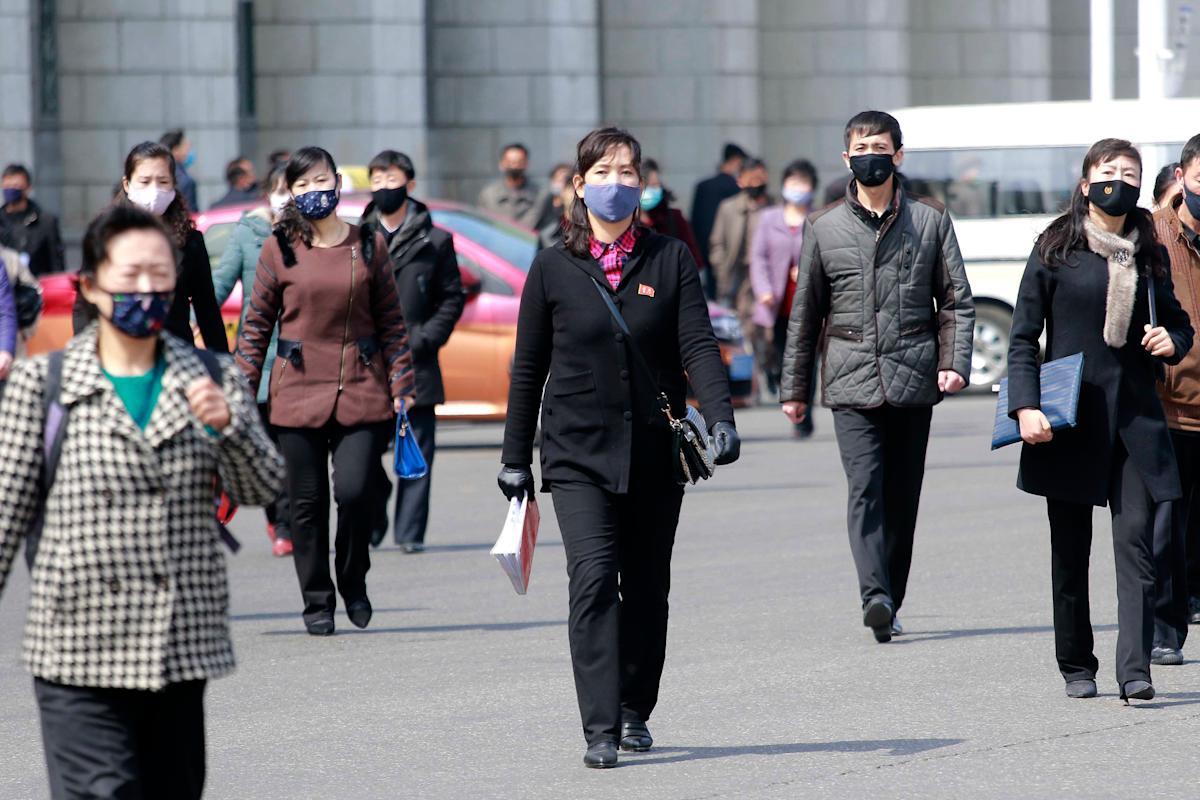SEOUL, South Korea (AP) — North Korea is placing surveillance cameras in schools and workplaces and collecting fingerprints, photos and other biometric information from its citizens in a technology-driven effort to keep even closer tabs on its population, a report says Tuesday.
The state’s increasing use of digital surveillance tools, which combine equipment imported from China with domestically developed software, threatens to destroy many of the little spaces North Koreans have left to engage in private business activities, access foreign media and to secretly criticize their government, the researchers said. wrote.
But the isolated country’s digital ambitions have been hampered by poor electricity supply and poor network connectivity. These challenges, and a history of reliance on human methods to spy on its citizens, mean that digital surveillance is not yet as ubiquitous as in China, according to the report, published by the North Korea-focused website 38 North.
The study’s findings are consistent with the widely held view that North Korean leader Kim Jong Un is increasing efforts to strengthen state control over its citizens and promote loyalty to his regime.
These efforts were amplified by the COVID-19 pandemic, with the North imposing strict border controls that were maintained for three years before cautiously reopening in 2023.
New laws and recent reports of tougher penalties suggest the government is cracking down on foreign influence and imported media, likely helped by fences and electronic monitoring systems installed at the border with China during the pandemic.
“Having seen that it is possible to close the border so tightly, I think they would now like to keep it that way,” said Martyn Williams, an analyst who co-wrote the study with Natalia Slavney.
“In terms of broader surveillance across the country, the pandemic could have played a role, but I think a much bigger role has been played by the rapidly falling costs of surveillance equipment,” Williams said.
The report examined North Korean surveillance technologies using information gleaned from domestic and international media reporting and publicly announced research at North Korean universities and state organizations. The researchers also said they interviewed 40 North Korean refugees about the surveillance they experienced while living in the country, and, through unspecified partners, surveyed 100 current North Korean residents by telephone in 2023, text messages and other forms of encrypted communication to ensure their security. .
State media reports indicate that video surveillance is becoming increasingly common in schools, workplaces and airports. The cameras usually come from Chinese suppliers and range from simple video feeds to more advanced models with features such as facial recognition.
Experts have warned that China is exporting the technology that powers its AI-powered surveillance to countries around the world.
Reports in North Korean state media indicate that cameras are now appearing in most schools in the capital, Pyongyang and other major cities, allowing school staff to remotely monitor what’s happening in classrooms by panning and zooming to focus on individual students or teachers to concentrate.
Cameras are also widespread in factories, government buildings and other workplaces, both to improve security and prevent theft, while facial recognition systems have been used since 2019 to register visitors at Pyongyang’s Sunan Airport.
North Korea has also expanded its network of traffic cameras outside Pyongyang since 2021, installing them on major roads in and out of the city, likely for the purpose of automatically registering license plates, the report said.
The government may not yet be able to fully utilize the data collected and does not currently have an intensive network of security cameras in streets and residential areas, possibly due to electricity shortages and the large number of security agents monitoring all public life. in Pyongyang and elsewhere.
But North Korea appears to be envisioning a future of more ubiquitous video surveillance. North Korean universities and research institutions have focused for years on developing motion detection, facial and license plate recognition technologies, according to the report.
Meanwhile, the state is also building detailed biometric profiles of its citizens. The latest version of North Korea’s national ID cards comes in smart card format and requires citizens to provide fingerprints and facial photos and, at least according to one report, take a blood test.
“For North Koreans, the proliferation of CCTV means even greater surveillance of their lives, especially if the cameras contain automatic detection systems. If such cameras become more widely used, citizens involved in illegal activities would be especially at risk because facial detection could track their movements through cities,” Williams and Slavney wrote.
“Currently, North Koreans who become involved in activities such as smuggling or distributing illegally imported goods and foreign content can bribe local security forces, but, unlike humans, security cameras cannot be bribed,” they said.
Williams said the government will push to expand its surveillance network beyond major cities as infrastructure improves. It still won’t be easy to tap into large amounts of video data, he said, but North Korea can learn lessons from its neighboring state.
“Perhaps the biggest hurdle is the computing infrastructure to process all this data in real time. Doing this at a national or even provincial level is no easy task if the network is to be truly ubiquitous and multi-camera,” Williams said. “The country should build a small data center and ensure a constant power supply. I think it could certainly be inspired by China, which is a relatively freer society overall, but has a much more Orwellian digital surveillance network.”






